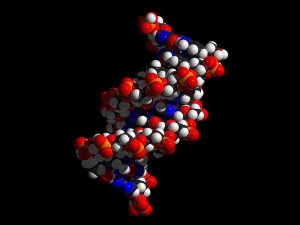On October 10th 2013, there were headlines on the front pages of several British papers claiming that “A simple pill may cure Alzheimer’s”. These papers included the Times (£) and the Independent, who both put the stories on their front pages, the BBC website and breakfast show. The story was also tweeted by these outlets as well as America’s Fox News:
This breakthrough in treatment for Alzheimer's could very soon pave the way for a simple pill to cure the disease. http://t.co/hFBUSdr38R
— The Independent (@Independent) October 10, 2013
VIDEO: Discovery 'may hold Alzheimer's key' http://t.co/30CG76hPW9
— BBC Health News (@bbchealth) October 10, 2013
Scientists make potential Alzheimer's treatment breakthrough: http://t.co/FGsyI2U7uK
— Fox News (@FoxNews) October 10, 2013
As a scientist who has worked on Alzheimer’s disease, headlines like this always provoke my cynical side. I’ve seen stories proclaiming a cure many times before, yet no cure is forthcoming. My cynicism was somewhat rewarded when I researched the story further. The study did indeed find that a pill, which inhibits a protein called PERK, was able to prevent brain cell death in mice which showed symptoms of disease. However, the disease the mice had was not Alzheimer’s; they had a prion disease.
In order to understand the research, here’s a quick explanation. Prions are misfolded, infectious proteins which are linked to neurodegenerative diseases such as BSE (or “mad cow disease” as it was known in the 80s) and CJD in humans. Alzheimer’s is also caused at least in part by a misfolded protein, called amyloid-beta (Aβ). Both prions and Aβ are affected by something called the Unfolded Protein Response (UPR) in cells. The UPR detects the misfolded protein and stops the brain cell making any new proteins. This means that the cell cannot make proteins which are essential to its survival and so will eventually die, leading to neurodegeneration.
Don’t get me wrong, the results from the study are promising. However, the newspaper headlines are incredibly misleading. There are some key problems with interpreting the research as a “cure for Alzheimer’s”:
- This study only theoretically applies to Alzheimer’s disease as the authors note that Aβ is subjected to the same UPR as prions. The effects of the drug will need to be tested on Aβ before any definitive conclusion can be made about its effectiveness in treating Alzheimer’s. Furthermore, Alzheimer’s disease has other contributory destructive mechanisms not related to the UPR which also need to be assessed. The same is true before a link can be made to the other neurodegenerative diseases mentioned in the paper, such as Parkinson’s or ALS.
- The research was conducted in mice rather than humans and there is no guarantee that the drug will be usable in humans. It may not have the same effects or the side effects may render the drug unusable.
- The drug causes potentially serious side effects in mice such as mild diabetes and weight loss. This would have to be rectified before the drug can be administered to humans which could take a significant amount of time.
- The weight loss side effect in mice means that they could not be used for a long time and it is unknown what the long term effects of the drug are. Something which targets both the brain and an essential cellular process such as the UPR may have detrimental effects if used over a long period of time.
- The pill does not “cure” memory loss. The mice that were treated with the drug did not regain memories which were already lost. However, treating these mice did prevent the disease from progressing further. This pill will not help people who already suffer from mid to late-stage dementia.
- Even if the drug is suitable for use in humans, it will have to go through clinical trials before being put to regular use. This will take years, possibly even decades.
Most of the newspapers covering this story did mention some of these problems. The Independent in particular made it very clear the study was in mice and a cure is “a long way off”. (However, in their tweet (above) they say that, “This breakthrough in treatment for Alzheimer’s could very soon pave the way for a simple pill to cure the disease.” showing the differences in these types of news communication). The Express, on the other hand, took seven lines to even mention that the study was in mice. Unfortunately, in this day and age, many people don’t read further than the headline, sub-heading and possibly the first two or three paragraphs. Many people therefore may well get the impression that a cure for Alzheimer’s is imminent and misunderstand the point of the study.
Later on in the day when things had calmed down a bit many newspapers did write editorials (for example in the Independent and the Guardian). These mostly highlighted some of the points above and clarifying that there is still a long way to go in curing Alzheimer’s. But this is after the damage had been done, the headlines had been seen and the tweets had been sent. The point is that the story should never have been given so much prominence in the first place.
It’s quite easy to assess how people are reacting to a story by use of Twitter. A quick search of “Alzheimer’s” on the day the story broke showed a lot of people re-tweeting the story from various news sources, some with a link, some without. The misleading nature of the headline can be seen by the nature of some of these tweets, including one which said “They’ve found a cure for Alzheimer’s. This is big”. One of the big tweeters was the comedian Jimmy Carr, who tweeted this (rather lame) joke:
Great news, scientists have found a cure for Alzheimer's, I'll never forget this day….if it works.
— Jimmy Carr (@jimmycarr) October 10, 2013
With no link to the story, how are people supposed to know where he got the information from? Another problem with today’s microblogging news delivery system is that there isn’t a lot of room for details and so the story can easily get mutated.
There were some expressing cynicism. The Alzheimer’s Society stated “This is a promising development as it shows this biological pathway is a potential target for new treatments. However, it is important to note that this study was carried out on mice with prion disease and so it is not clear how applicable it is to humans with diseases such as Alzheimer’s.”
But it’s not the users of Twitter who I am concerned about. The problem with misleading story reporting like this is the effect it has on sufferers of the disease or their relatives. The reason this particular story has got me angry is because I have seen the effects that this sort of reporting can have. Long-term readers will be aware that my grandmother suffered from Alzheimer’s Disease, which took a huge toll on my grandfather.
I still clearly remember a day when a national tabloid newspaper carried the headline “Vaccine for Alzheimer’s Disease!” My grandfather read the headline, turned to me and said “Does this mean they’ll be able to cure your grandmother?” My cynicism piqued, I read the article and had to gently tell him no. That story held many of the same points as this one; it was a study done in mice and no human trials had been conducted. It is five years later and there is no news on that subject; whether it failed at clinical trials or is still being tested I don’t know. But the false hope it gave to my grandfather, and the countless others who read these headlines and think their disease may be cured soon, is a sad and dangerous thing.
 Who is to blame for this misinformation spreading? It’s probably a subtle combination of the scientists who wrote the paper, the journal who published it and the reporters who wrote the newspaper stories. For scientists, having work published in national newspapers is a huge coup; national reports result in interest in your work and so you’re more likely to secure funding to continue with your groundbreaking research. Unfortunately, newspapers and by extension their readers will mostly respond to “interesting” stories, which translates to “treating a disease that people have heard of”.
Who is to blame for this misinformation spreading? It’s probably a subtle combination of the scientists who wrote the paper, the journal who published it and the reporters who wrote the newspaper stories. For scientists, having work published in national newspapers is a huge coup; national reports result in interest in your work and so you’re more likely to secure funding to continue with your groundbreaking research. Unfortunately, newspapers and by extension their readers will mostly respond to “interesting” stories, which translates to “treating a disease that people have heard of”.
Alzheimer’s is big news now, as it is predicted to affect 1 million people by 2021. Therefore, the scientists probably put Alzheimer’s as the key point of the findings to increase interest in their research. This is a common practise amongst researchers desperate to secure funding from a dwindling pot. I noted when researching this post that every single headline said the more evocative “Alzheimer’s” rather than “Parkinson’s Disease” or “ALS” which were also mentioned in the research paper as potential beneficiaries of the drug. Curiously, CJD isn’t even mentioned by the researchers as a disease which can benefit from the treatment despite being the best-studied prion disease in humans. However, CJD is much rarer than Alzheimer’s (causing 1 death per 1-2 million of the population) and the media storm that happened around it in the 90’s has died down. It is not a “sexy” enough disease to sell research or newspapers on such a grand scale.
How is this problem going to be solved? Is it possible to make research interesting if it’s not linked to a disease? I would like to think it would, but them I’m biased. It’s a real bugbear for me as a biologist that an “interesting” story about biological research has to be about curing a disease. Research which just explains how a system works can be fascinating.
Certainly taking out a small, speculative point and blowing it up to the key part of the story doesn’t work. However an accurate headline such as “There’s a drug which prevents brain cell death in mice that have something similar to Alzheimer’s disease; won’t be used in humans for a decade or so” is hardly catchy. But it should be made crystal clear in the very first reading points of the article exactly what has been found and its relationship to the disease; the authors and journalists at least owe that to the people affected. As a reader, it’s probably best to take headlines involving the words “cure” and a deadly disease with a pinch of salt until you’ve read the full article. Unless they involve the words “repeated successful human trials” then it’s probably best to treat the information with caution.
Post by: Louise Walker (in rant mode)





